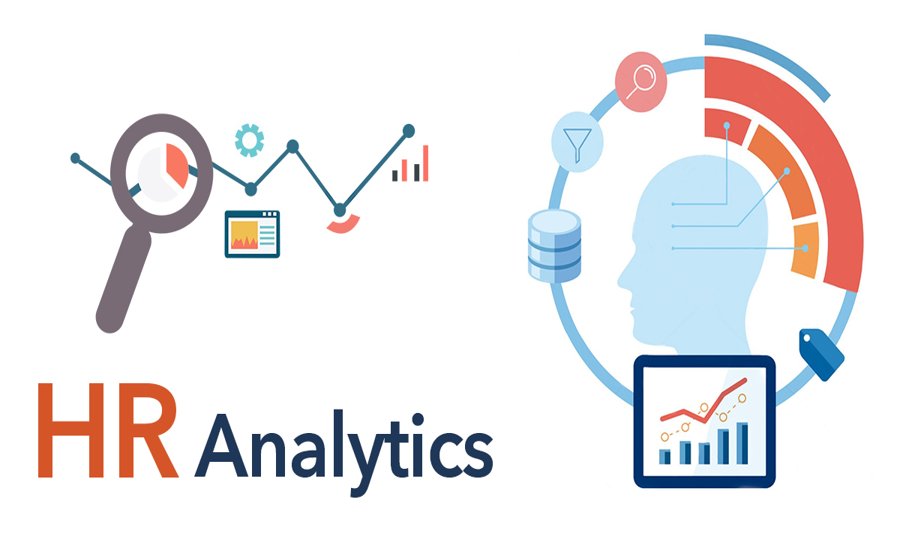In the rapidly evolving workplace, HR analytics has emerged as a cornerstone of effective decision-making. By harnessing data, organizations can transform their HR functions from reactive problem-solvers to proactive, strategic leaders. Here’s an in-depth look at how HR analytics is revolutionizing decision-making and creating measurable value.
-
The Scope and Potential of HR Analytics
HR analytics involves gathering, analyzing, and interpreting workforce data to uncover trends, predict outcomes, and guide decision-making. It moves beyond basic metrics (headcount, turnover) to offer insights into employee behaviors, productivity, and engagement.

-
Stat:
According to a Deloitte study, 71% of companies see people analytics as a high priority, but only 9% believe they have a strong capability in this area.
-
Potential Use Cases:
- Identifying drivers of employee turnover.
- Predicting future skill needs.
- Measuring the ROI of learning and development programs.
-
Types of HR Analytics and Their Strategic Applications
Descriptive Analytics:
Answers “What happened?”
-
Example:
Tracking attrition rates to identify high-turnover departments.
-
Impact:
Helps HR understand past trends and address immediate challenges.
Predictive Analytics:
Answers “What is likely to happen?”
-
Example:
Using AI to predict which employees are most at risk of leaving.
-
Impact:
Allows proactive measures, such as revising compensation or improving engagement initiatives.
Prescriptive Analytics:
Answers “What should we do?”
-
Example:
Recommending optimal team structures based on skill alignment.
-
Impact:
Provides actionable insights to enhance productivity and team performance.
People Analytics in Recruitment:

-
Stat:
Companies that use predictive analytics in hiring see a 23% increase in employee retention, according to LinkedIn’s Global Talent Trends Report.
-
Example:
Google’s Qubit Analysis Tool helps in assessing candidates’ long-term fit with organizational culture.
Our Total Offer Modeler will not only help make more efficient and accurate salary offers, the dashboards and analytics will provide deep insights into the offer making process.
-
Enhancing Workforce Planning
Strategic workforce planning is vital in aligning talent with business objectives. HR analytics can forecast:
- Skill shortages: Identifying future skill gaps by analyzing current workforce trends.
- Talent pipelines: Ensuring succession planning by analyzing employee tenure and leadership potential.
Example:
Unilever uses data analytics to predict workforce trends and inform hiring strategies for its global operations.
-
Elevating Employee Engagement and Retention
HR analytics helps organizations understand employee sentiment, track engagement levels, and identify retention risks.

-
Stat:
Gallup reports that companies with engaged employees are 21% more profitable.
-
Example:
IBM uses AI-driven tools to assess employee satisfaction through natural language processing of feedback and surveys.
Talent Accelerator’s Live Benchmarking tool with its array of compensation analytics will provide leaders the necessary information they need to make data driven decision making.
-
Optimizing Learning and Development
HR analytics provides a way to measure the effectiveness of training programs and align them with organizational goals.

-
Stat:
A McKinsey study reveals that companies investing in data-driven L&D programs are 30% more likely to achieve organizational goals.
-
Example:
Shell leverages analytics to customize training programs based on individual skill gaps.
-
Measuring Diversity, Equity, and Inclusion (DEI) Efforts
HR analytics enables organizations to track progress in DEI initiatives by analyzing hiring, promotion, and pay equity data.
-
Stat:
Companies in the top quartile for gender diversity are 25% more likely to outperform their competitors (McKinsey).
-
Example:
Microsoft uses analytics to ensure pay equity and track the career progression of underrepresented groups.
-
Key Tools and Technologies
Organizations are leveraging cutting-edge HR technologies to unlock the full potential of analytics:
- Workday: Comprehensive analytics for workforce planning and DEI metrics.
- Tableau: Visualizing complex HR data for actionable insights.
- SAP SuccessFactors: Combining HR processes with real-time data analysis.
-
Challenges and Considerations
While HR analytics offers immense benefits, implementation comes with challenges:
- Data privacy and ethics: Ensuring compliance with GDPR and other regulations.
- Skill gaps: Building data literacy within HR teams.
- Integration issues: Merging data across multiple platforms and departments.
-
Future Trends in HR Analytics
As technology advances, HR analytics will expand into:
- AI-powered sentiment analysis: Providing real-time insights into employee well-being.
- Blockchain: Offering secure, verifiable employee credentials for seamless recruitment.
- Wearable tech: Gathering data on physical well-being to inform wellness programs.
Conclusion: A Strategic Imperative
HR analytics is no longer a luxury; it’s a strategic necessity. By using data-driven insights to inform decisions, organizations can enhance employee experience, improve performance, and align HR initiatives with broader business goals. HR professionals who embrace analytics will not only transform their departments but also become pivotal in driving organizational success.
